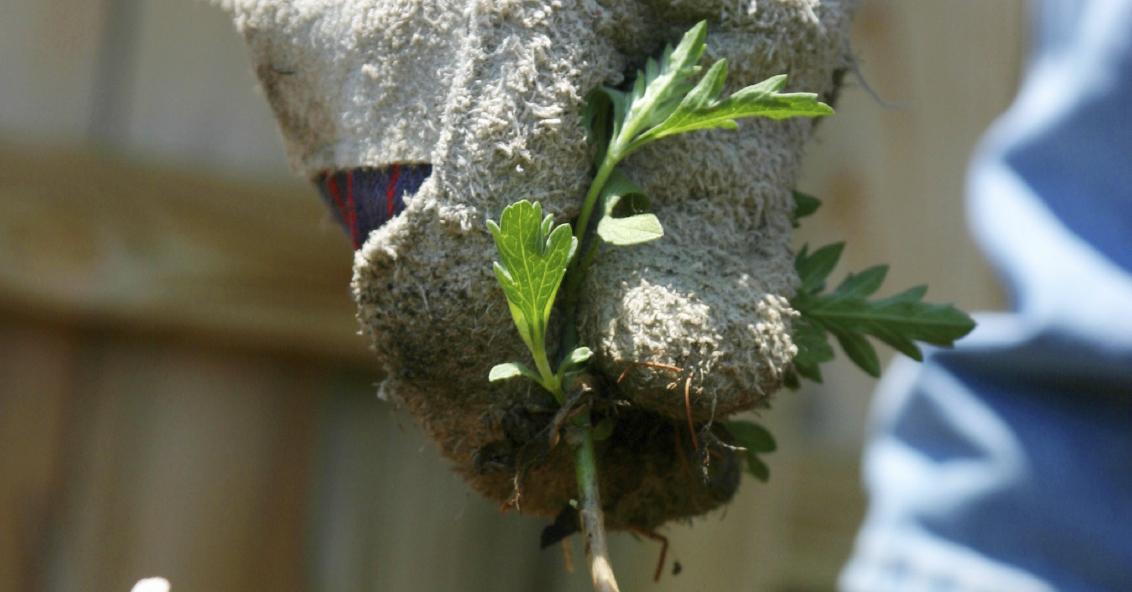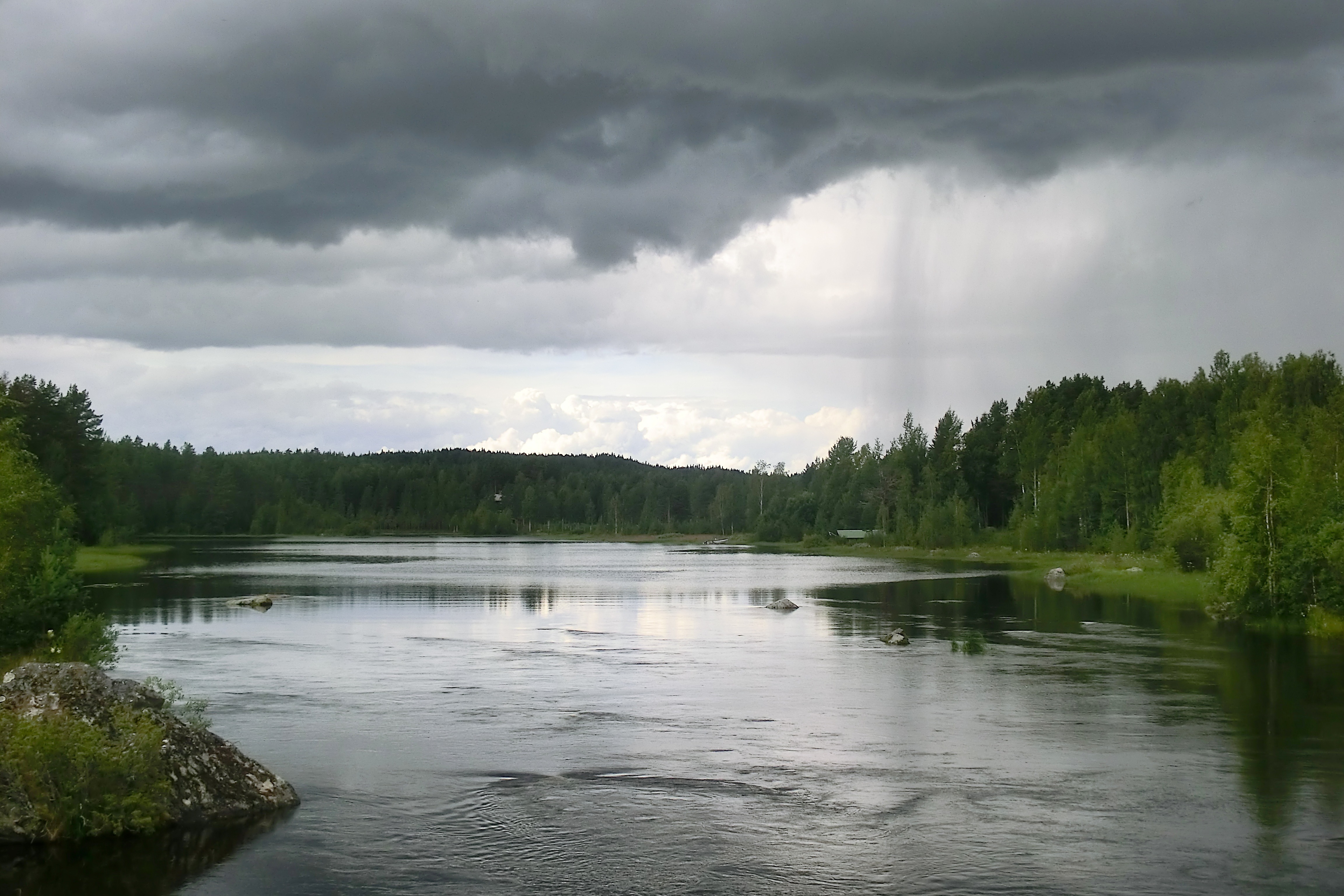
A green roof in Washington, D.C. after maintenance. Image by DC Water
DC Water, Washington, D.C.’s water and wastewater utility, has embarked on a long-term effort to reduce combined sewer overflows to the area’s Anacostia and Potomac rivers and Rock Creek through its long-term control plan, the DC Clean Rivers Project. In combination with a tunnel system that temporarily stores and conveys combined sewer flows for treatment, the DC Clean Rivers Project will incorporate green infrastructure to manage rain events 30 mm (1.2 in.) or greater on nearly 202 ha (500 ac) of impervious land in two D.C. neighborhoods.
With upcoming large-scale investments in green infrastructure and construction on the first contracts beginning in 2017, DC Water is developing a robust asset management program with an adaptive framework to plan proactively for green infrastructure maintenance. The utility began developing its green infrastructure asset management program in 2013. Now it is managing existing assets with the three-fold goal of ensuring performance, public and maintenance crew safety, and aesthetics.
Developing a Skilled Workforce
As with traditional infrastructure, long-term maintenance is critical to the longevity and performance of green infrastructure practices. However, green infrastructure is still a relatively new approach to managing stormwater, and maintenance remains one of the key obstacles to its widespread implementation. From its distributed, conspicuous nature to the need for developing multidisciplinary workforce skills, green infrastructure presents unique maintenance challenges compared to some traditional infrastructure.
“The unique challenge and opportunity of green infrastructure is that it is both above ground and highly visible. It is right in front of people’s homes and businesses,” said Caitlin Feehan, green infrastructure planning coordinator with DC Water. “This creates an opportunity to generate public awareness by showing people what stormwater management is. At the same time, the level of maintenance can negatively or positively influence how the public feels about your program.”
That connection with the community is critical to developing support for stormwater management. In turn, green infrastructure can create local jobs and enhance neighborhoods when maintained properly. Fortunately, proper maintenance and long-term job creation go hand-in-hand. Earlier this year, DC Water worked with the District of Columbia government to establish a memorandum of agreement for employing DC residents on green infrastructure projects. That agreement sets a goal for local new hires at 51%.
“A core aspect of maintenance is having a trained and skilled staff,” said Bethany Bezak, green infrastructure manager with DC Water. This type of infrastructure combines pipes and hard surfaces with softer assets like vegetation and green space. “Maintenance of this infrastructure requires unique and diversified skillsets beyond traditional landscape or storm sewer maintenance. A combination of both skillsets is needed to be successful,” she said.
To develop those skills, DC Water is partnering with the Water Environment Federation to create a national green infrastructure certification program for construction, inspection, and maintenance with the goal of training the first group of candidates in late 2016 and certifying them in early 2017.
Adaptive Management
From developing workforce training to selecting software, asset management details should be considered during the beginning phases of a green infrastructure program, Feehan said.
“It is easy to want to spend money on implementation because the public wants to see projects put into the ground,” she said. “But for projects to thrive and perform, asset management is a critical component.”
DC Water’s asset management program initially was shaped by a survey examining the maintenance experiences of eight green infrastructure programs across the nation. DC Water further developed its program by relying on its own extensive experience managing water and sewer assets. The utility created an approach that ensures green infrastructure performance and increases maintenance efficiency over time.
As its starting point, DC Water’s asset management program now includes 15 bioretention basins, two green roofs, and two pervious pavement sites. All are located either at DC Water facilities or in the public right-of-way. By starting ahead of a significant number of projects, the program’s adaptive management approach makes it flexible and enables the program to evolve as the utility builds additional green infrastructure.
“We were very thoughtful about the data we wanted to capture and track,” Bezak said. “We used that as our starting point but also put into place flexibility. Whenever we install or maintain green infrastructure, lessons learned are funneled into future projects to get better performance and reduce long-term costs.”
DC Water’s asset management program has eight steps arranged in a continuous improvement loop. This process enables the program to mature with a focus on adapting tasks, frequency, and the overall maintenance framework. Information from the program not only will help DC Water optimize its maintenance efficiency, but also will improve the siting, design, and construction of future green infrastructure projects.
Improving Maintenance Efficiency
DC Water will use two software packages to document data and manage maintenance. The software specific to asset management will organize the maintenance schedule for each asset, automatically generate work orders, and track non-routine and corrective maintenance activities. It hosts the inventory of baseline maintenance tasks, durations, and frequencies.
“We want to optimize those over the long term,” Feehan said. For example, “when you set a baseline task to occur for a certain amount of time, but it takes less time, you may not need to do it at the same frequency.”
DC Water also is assessing contractor performance, current green infrastructure designs, and the process for logging and tracking the completion of maintenance tasks. By the end of 2015, maintenance crews will able to manage work orders remotely, reporting on issues and tasks in real-time on mobile devices.
The asset management software is coupled with a geographic information system platform that provides a spatial representation of green infrastructure facilities and an inventory of green infrastructure project data.
For each project, the system collects information on more than 40 green infrastructure attributes such as practice type, design specifications, construction details, location, as well as ownership and responsible maintenance entity. This information enables the utility to sort maintenance data by many variables, including very specific green infrastructure design characteristics.
Designing for Maintenance
With the information it collects, DC Water can track performance factors and issues that occur at an individual asset or type of asset. To prevent frequent corrective maintenance, staff can determine how to fix the asset. Or, if the problem involves an entire subset of assets, the utility could adapt its standard design for that subset. For example, if bioretention facilities continually experience erosion, DC Water might improve its design to better dissipate energy at the inlet and reduce the velocity of runoff into the facilities.
The data the utility is collecting now will inform green infrastructure design standards. Such standards will streamline maintenance with their consistency. DC Water also will improve maintenance efficiency by specifying materials and layouts that rely on common maintenance crew skillsets and reduce the variation in tools needed.
“Green infrastructure should not be siloed into specific phases of implementation,” Bezak said. “All components are integrated, and maintenance should be considered during design and siting work.”
The utility also will explore how maintenance needs change as vegetation matures. For instance, DC Water temporarily irrigates green roofs until the plants are established, then stops. By collecting maintenance data through its asset management program, DC Water will be better equipped with green infrastructure life-cycle costs that incorporate long-term maintenance needs.
Analyzing asset management data is critical to program evolution, but “you have to put staff time into looking at issues, analyzing data, and coming to some conclusions in order to continuously improve,” Feehan said.

















Very good information and application for Green Infrastructure Program.